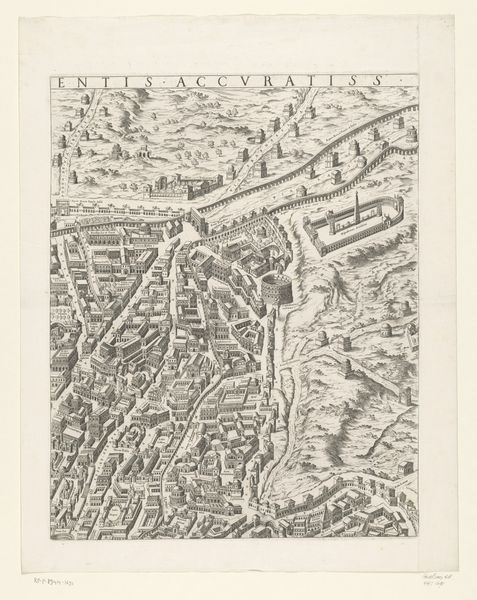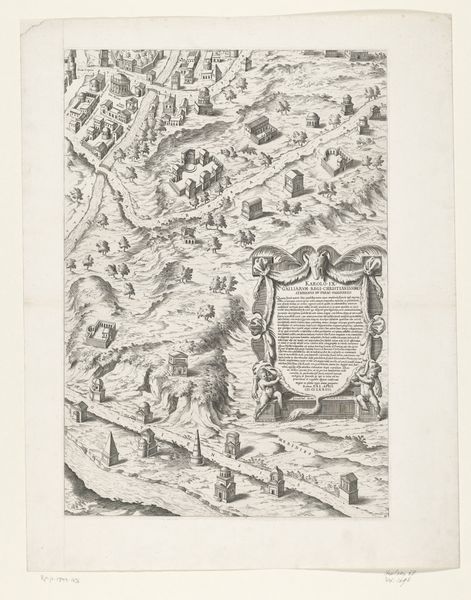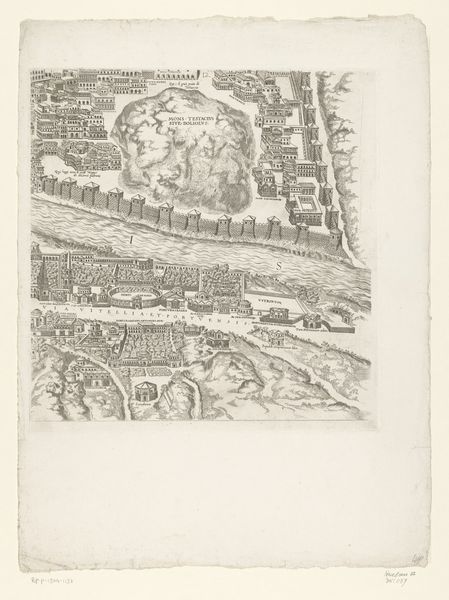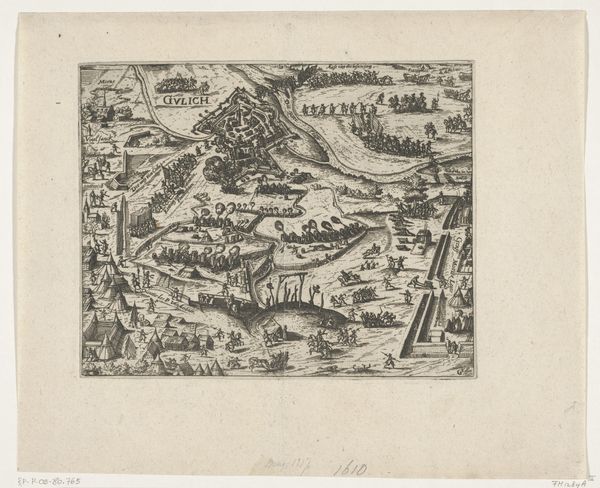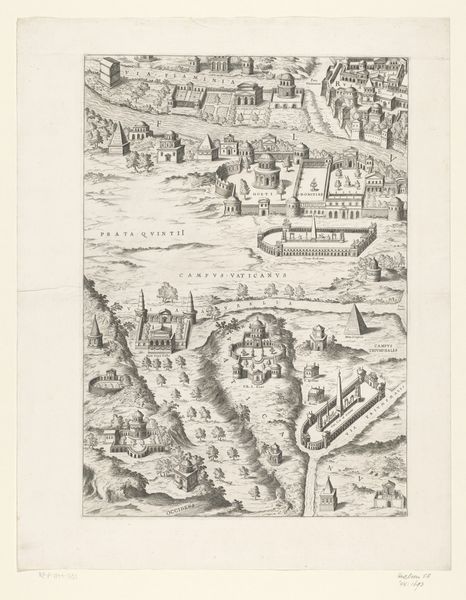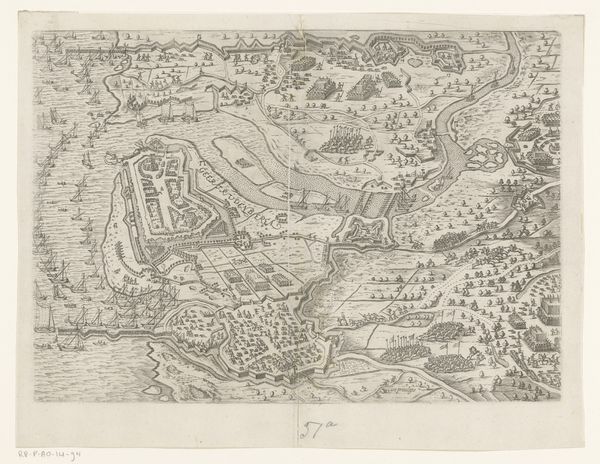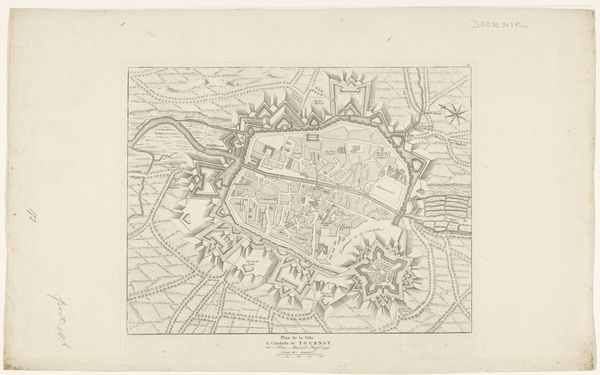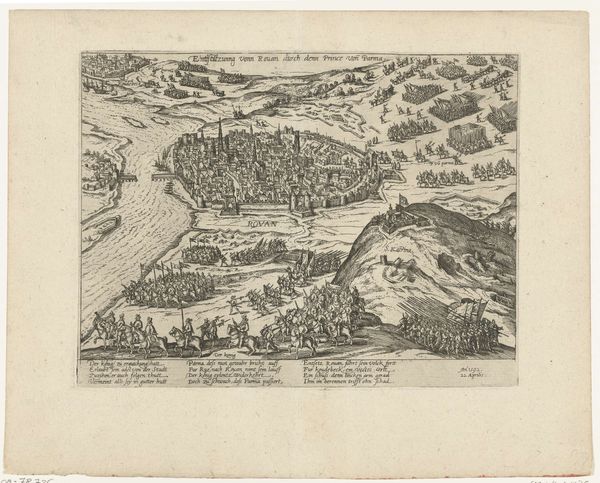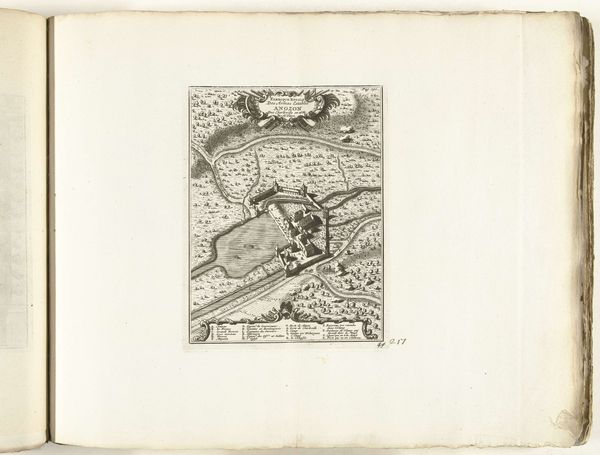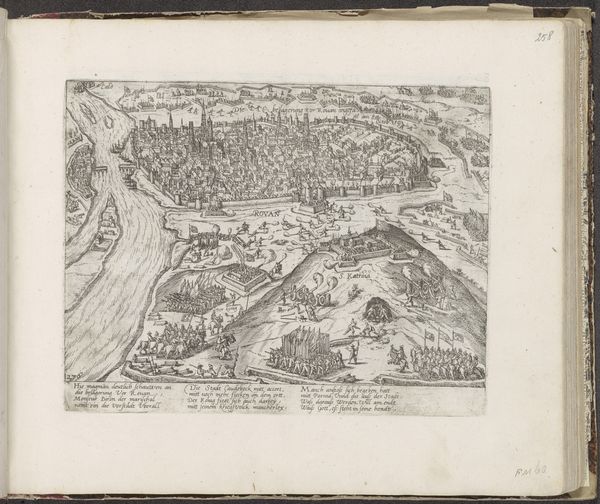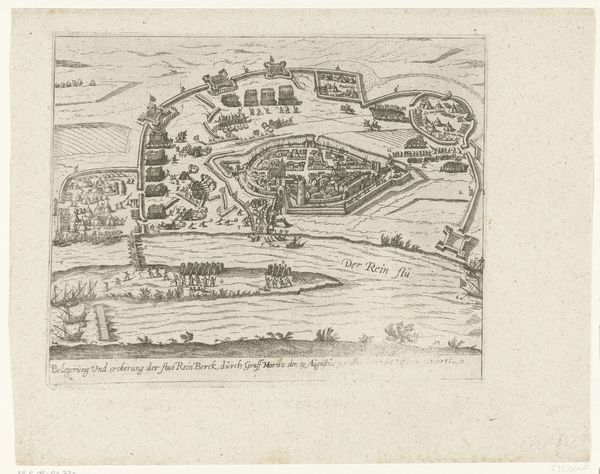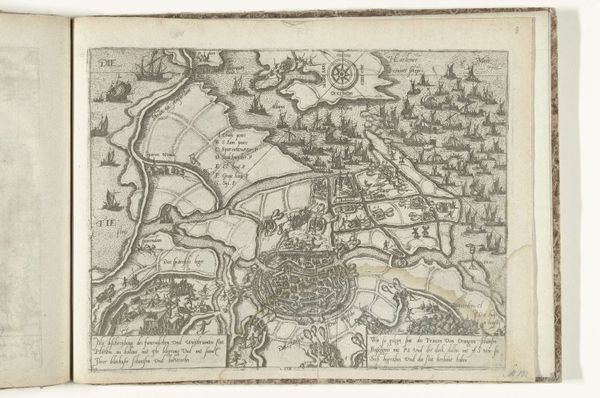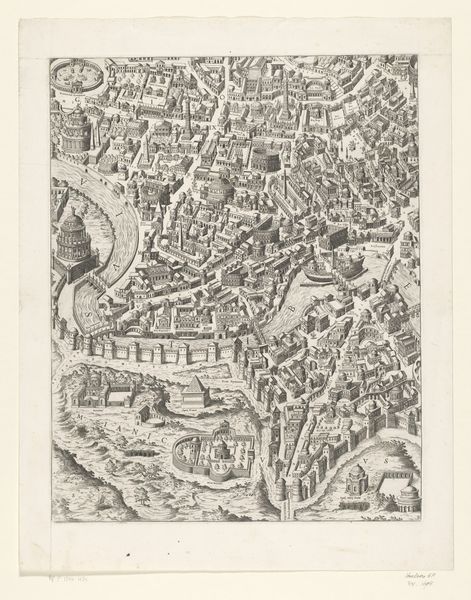
drawing, print, etching, pen, engraving
#
drawing
#
pen drawing
# print
#
pen sketch
#
etching
#
old engraving style
#
pen
#
cityscape
#
history-painting
#
engraving
Dimensions: height 525 mm, width 370 mm
Copyright: Rijks Museum: Open Domain
Editor: We're looking at Étienne DuPérac’s “Plattegrond van Rome in de Romeinse tijd (vierde deel),” created between 1639 and 1691. It’s an etching and engraving. I’m struck by how detailed it is; you can really trace the layout of ancient Rome. What catches your eye about this piece? Curator: I'm immediately drawn to the linear precision. Consider the intricate network of lines that define the architecture and landscape. Notice the contrast between the dense areas of built structures and the relatively open spaces designated as terrain. Editor: It's like a meticulously crafted puzzle. How would you interpret the artist’s choices in terms of composition? Curator: The formal arrangement demonstrates a clear emphasis on perspective and scale. The use of line weight subtly denotes depth, drawing our eyes to specific architectural features. The systematic organization and orientation create visual order and clarity, helping viewers interpret space and form on the picture plane. Do you find that these structural elements evoke a particular sensation? Editor: Definitely, there is a kind of calmness to the image due to the organized lines and repeating structures. I guess the visual clarity is key to reading this piece. I wouldn’t have considered that first, I think. Thanks! Curator: Indeed. The print's clarity enables the communication of a very detailed cartographic picture of historical space. Close inspection always reveals more; keep asking questions, keep looking closer.
Comments
No comments
Be the first to comment and join the conversation on the ultimate creative platform.
